
What is an aggressive puppy?
An aggressive puppy display behaviors such as biting, snapping, and growling in situations they should not – like normal petting and handling from people.
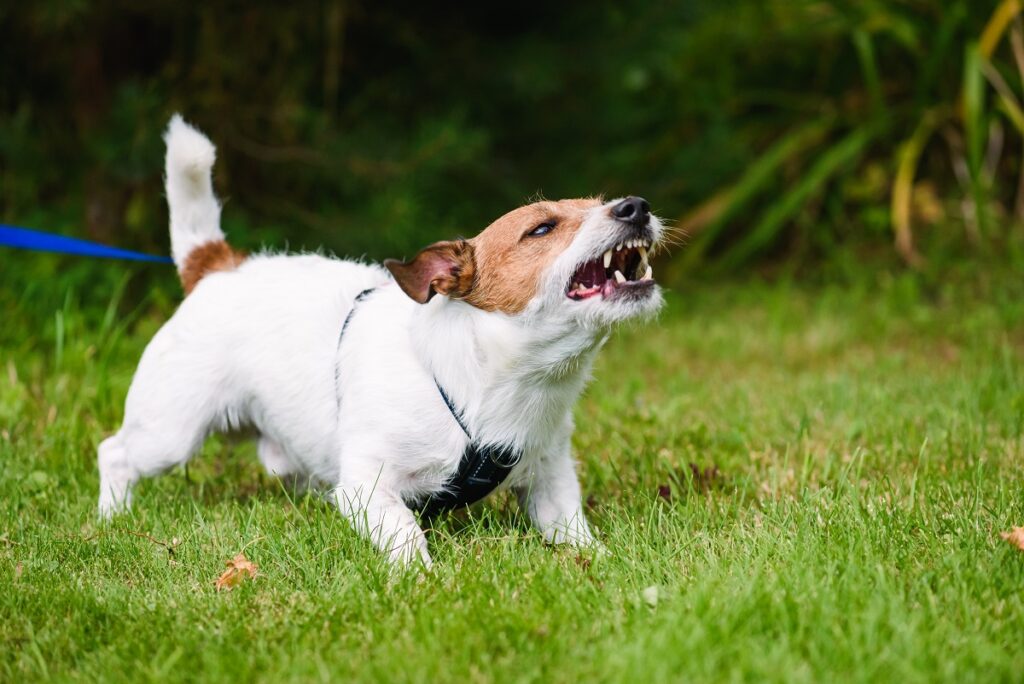
All puppies will bite and growl in play. But not with the the intent to cause harm to another dog or a person.
In this article, we will discuss true aggression, its causes and its solutions. We will also discuss the normal play biting puppies do when with people and how to handle this behavior.
How do we define aggressive behavior in puppies?
Firstly, different breeds of dog have differing ingrained traits.
For example, a slightly shy Australian Shepherd may be normal for that breed. A highly reactive Smooth Fox Terrier may be normal for that breed. And a very mouthy Golden Retriever may be normal for that breed.
When evaluating a dog’s behavior, it is important to consider what is normal for that breed.
Next, we have the context of the situation.
Our first example will be a stranger approaching a 12-week-old Golden Retriever on a leash walk. In this context, we expect the puppy to be bouncy and enthusiastic about greeting the person. The puppy should be wagging its tail, with ears perked up or slightly back and a loose body. All of these things say, “I’m friendly and want to say hi!”
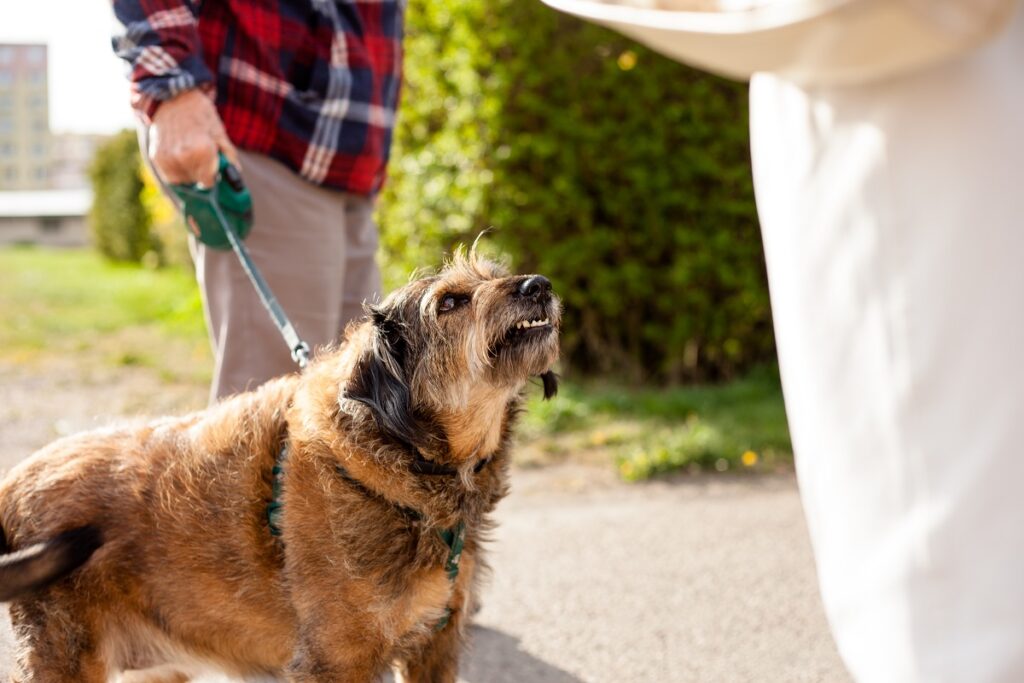

If we had the same puppy but with fear aggression, we would expect it to do the following:
- Attempt to hide behind the owner
- Tuck its tail between the legs
- Hold the ears plastered to the head
- Dilated eyes
- Stiff mouth with the musculature at the back curve of the lips apparent
- Body slinking towards the ground
- If approached and cornered (while on a leash), it freezes and snaps at the person reaching to pet it.
These responses are not normal, and are considered problematic behavior.
What causes aggression in puppies?
The two main causes of puppy aggression are a physical problem or lack of socialization.
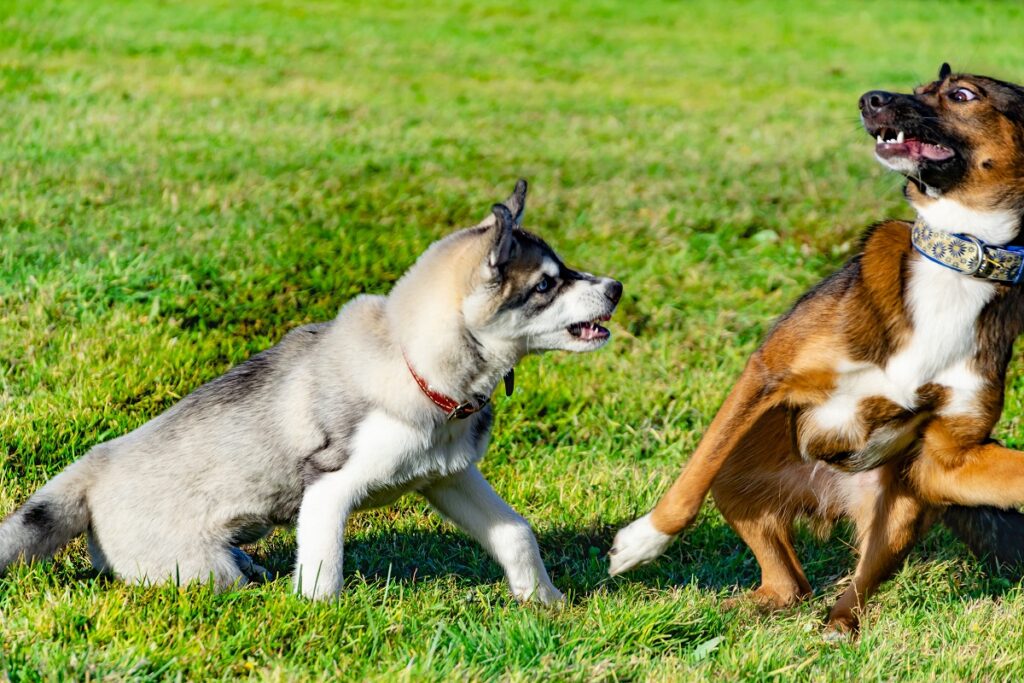

A physical problem may be something that causes the dog pain – like a malformation of the cervical spine severe hip dysplasia. Or a true neurological problem (the dog is not “wired” right).
Lack of socialization means the puppy has not been exposed to an adequate number of novel people, places, things, and sounds.
This is something that should start in the breeder’s home (or with the shelter or foster family). And it must continue once the puppy comes home.
Furthermore, weeks 8-16 are a particularly critical time. Fearful puppies that have trouble adjusting to new things result in significant lapses on socialization. These puppies are more likely to lash out with aggression, because they do not know how to deal with the situation.
How do we help an aggressive puppy?
If a physical problem is leading to the aggression, a veterinarian must be consulted for proper diagnosis.
Many pain issues can be treated with medication or surgery. Puppies heal very quickly! If the problem is one of hard wiring, euthanasia should be seriously considered.
These dogs will always be a liability in injuring people and other animals. It is essential that a person with a puppy with a true neurological problem completely understands what it will entail to keep this animal from harming others.
Working with the veterinarian and behaviorist, a management plan should be put into place. Furthermore, keeping a dog with this type of problem is not something to be taken lightly.
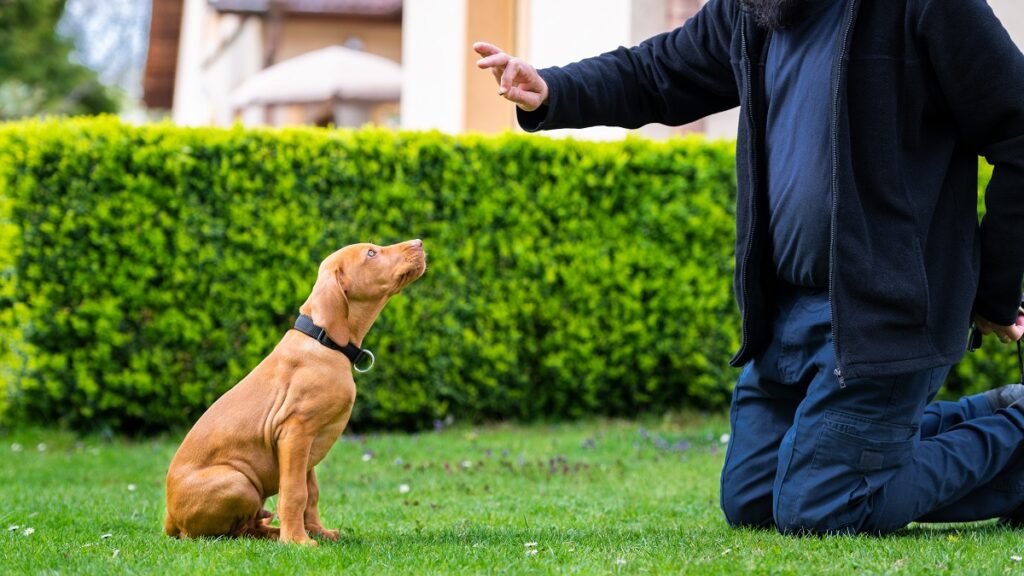

Puppies who are aggressive due to a lack of socialization or a traumatic experience require remedial socialization and desensitization.
This approach’s goal is to teach the puppy that novel things lead to positive consequences. Teaching a puppy with previous fearful experiences using systematic desensitization and counter conditioning can have a positive emotional association. This is best done under the direction of a behaviorist.
A behaviorist is either a veterinarian who is board-certified in behavioral medicine or a professional, typically with a PhD in animal behavior.
Your local veterinarian should be able to refer you, and below are links to associations for behaviorists. The sooner treatment is started, the better the prognosis.
In addition to that, young puppies learn quickly! Remember, work with a professional! Dealing with aggression on your own can be a dangerous thing.
What is normal puppy behavior versus aggressive puppy behavior?
Mouthing and Biting
The most common puppy behavior falsely viewed as aggressive is mouthing and biting.
Puppies do not have hands. They explore their world with their mouths. And it is normal for them to mouth people and all sorts of things. In saying this, puppies play with each other through mouthing and biting.
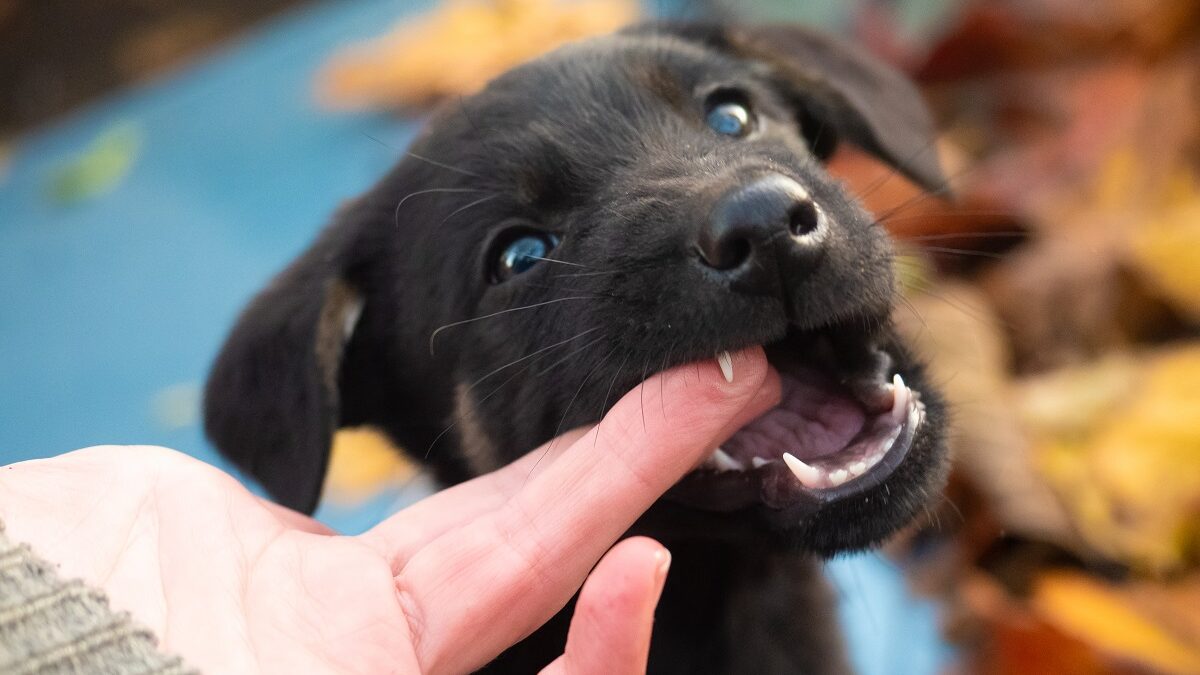

Puppies pick up on bite inhibition when playing. This means they learn how hard is okay to bite without causing harm.
Roughing housing and play is a “practice” for predatory behavior. And they have to do it with the upmost care not to injure the playing partner.
We have to keep in mind that dog skin is quite a bit tougher than human skin. So we have to reteach this bite inhibition when puppies mouth us.
Growling
Growling is another behavior that is often seen as aggressive. While growling can be use to threaten, it is also commonly used in play.
Dogs may growl while playing tug, rough housing, and grabbing on to your pant legs. This means, “oh what fun!” It does not mean the dog is aggressive.
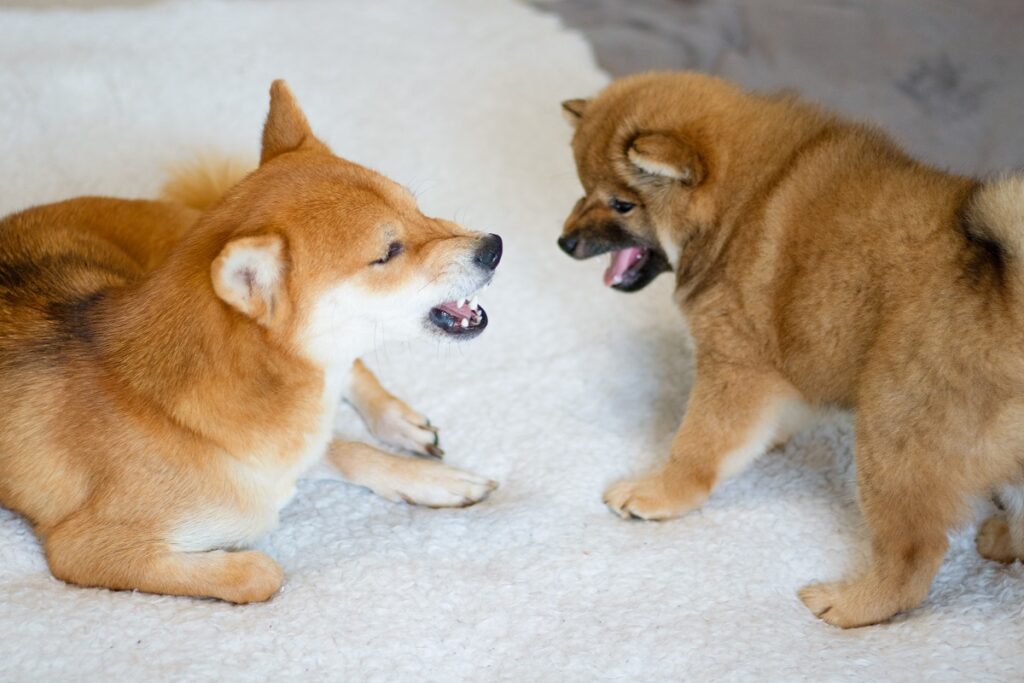

A good way to tell this is by looking at your dog’s body language. Do they have a fully wagging tail, loose and wagging body, play bow, and bounce excitedly? If so, they are likely just playing.
How do we stop play-biting?
Providing your dog with feedback is the best way to stop rough mouthing and biting. And you have two options: bite inhibition or bite prohibition.
1. Bite Inhibition
Teaching bite inhibition means teaching your dog how hard is safe to mouth on human skin.
Bite inhibition is a very valuable skill. If the dog feels it is forced to bite, it is much more likely to do so with discretion and not cause any serious damage.
Furthermore, dogs that are only taught never to mouth do not have this valuable skill. Teaching your dog inhibition first and then prohibition is important. This way you have a dog that is not constantly mouthing yet has a valuable skill.
2. Bite Prohibition
Teaching bite prohibition means teaching your dog to never mouth human skin.
Most puppies understand a high-pitched yelp to mean “ouch!” Yelping the moment the hard biting starts tells the puppy to back off. Follow this with praise for not mouthing (playing with a toy) or gentle mouthing (“good gentle”).
For puppies that do not stop with this, ending the game for hard biting is a valuable response.
Ending the game means you yelp to signal the dog something is happening. Get up and promptly leave the room without saying a word. A baby gate will help keep the pup in the room and you out. Wait a few minutes and re-enter.
Praise for playing with toys or using a gentle mouth as above. Repeat the end game every time the puppy is too hard.
Teething Puppies may bite
Remember that puppies are also teething. And their mouths are sore and chewing makes it feel better.
Provide your puppy with lots of safe chew toys. Toys that can be frozen are very soothing. Have patience and be consistent. Your puppy will learn not to bite and will grow out of the teething phase.
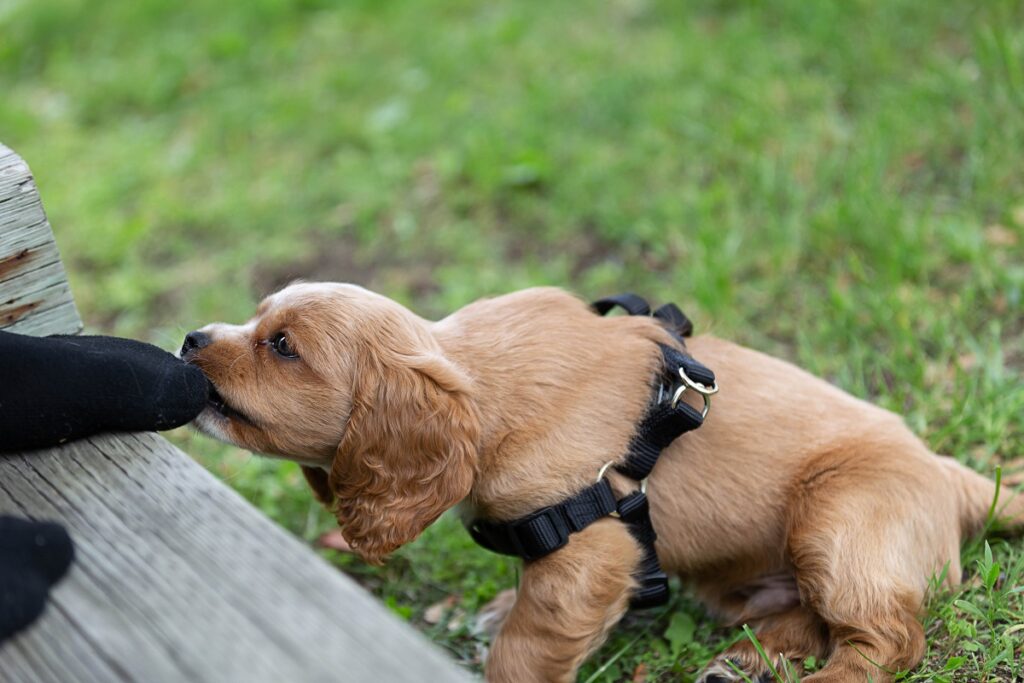

Most puppies have lost their incisors, canines, and premolars by 6 months. Some lose their large molars as late as 9-10 months. Don’t be surprised if you notice a second “wave” of mouthy-ness around that time.
Final Thoughts
Remember that true aggression means a behavior that is out of context for the situation. An aggressive puppy requires the help of a knowledgeable professional. Normal puppies may mouth, bite, and growl. Know what is normal and how to make your puppy a good citizen in your home.



